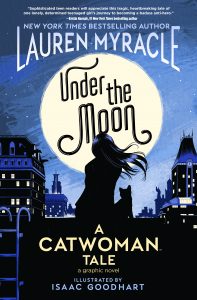
The original graphic novel is part of DC’s new Ink imprint, itself a part of an effort to expand the publisher’s audience. Ink is specifically aimed at young adult readers, and, fittingly, so too is Under the Moon. The book is written by Lauren Myracle. Typically a YA prose author, Myracle’s bibliography includes the best-selling Internet Girls novels. While Under the Moon marks Myracle’s first work in comics, joining her on the project is Isaac Goodhart. No stranger to the medium or DC, Goodhart’s resume includes a lengthy run on the creator-owned comic Postal, as well as work in the publisher’s New Talent Showcase 2018.
Under the Moon: A Catwoman Tale is a coming-of-age tale that features Selina Kyle and Bruce Wayne navigating high school. An expressive and fearless new take on the characters, the story and its imagery doesn’t shy away from scenes of abuse or instances of self-harm. Recently, the Beat spoke to Myracle and Goodhart about the title.
TW: References to abuse and self-harm follow.
Zack Quaintance: Can I start by asking what drew you to Under the Moon: A Catwoman Tale as a project?
Isaac Goodhart: DC reached out to me after Lauren had already completed here script, or at least was in the final stages of it, so everything was done, everything was set. When they asked me if I was interested, the idea of working on these characters who had these stories and histories and lore for decades and decades back before my parents were even born was extremely exciting. These are characters I’ve loved since I was a kid, so the idea of contributing to that story and that history, that was very enticing.
Lauren Myracle: DC contacted me and said we have this opportunity for you, are you interested in writing a graphic novel? I said, ‘You guys are insane, I’ve never written a graphic novel before.’ They said that’s why they were coming to me, and they told me about the whole line and their initiative to bring new readers to graphic novels and comics and DC characters, by combining them with more traditional young adult authors, having a strong foundation of more traditional storytelling. When they told me I had a chance to do Selina Kyle, my jaw dropped. I felt really really honored and really really scared. So, I wrote up a script with an outline.
For a long time, the illustrator part was a mystery me, though I knew that our editor was looking for someone. When [Isaac Goodhart] came on board for real and I started seeing his illustrations, all my fears were erased, because I knew this was the real deal. It was so obvious and he, far more than I do, loves and understands this whole DC world. I love it too, I just don’t know it like he does. So, his enthusiasm and his adorably dorky excitement about all the little details he put in…I mean, it just changed everything. Suddenly, there was chemistry and excitement. As I writer, I’m often writing alone. It’s really really solitary. When I started working with Isaac and our editor, there was daily communication. It just changed the whole process.
Quaintance: Lauren, being your first graphic novel, what was that like and how did it differ from prose writing?
Myracle: It was really different. There was a learning curve, of course. Gene Luen Yang and Mariko Tamaki both did online tutorials, and that was immensely helpful. The biggest difference is that I really did have to start thinking about this as if it were a movie playing out in front of my eyes, because plotting it out panel-by-panel means I could no longer have interior scenes where young adults sit around talking about being angsty together. That just doesn’t transfer. So, it made me be a better writer, because I had to make sure every panel was crucial, every panel was active, and every panel gave Isaac something to do that would push it beyond what the words on the page said.
Goodhart: I was very impressed at how well you took to the format. There are all these stories of comic book writers coming in from different fields–whether it be movies or TV or this and that–that don’t write for comics well, but you’re such a natural. Maybe surprised was the wrong word, but it made my job so much easier, and I’m very grateful for that.
Myracle: One thing I kept in my head, is I got an MFA from Vermont College, and so I’ve sat in on lectures by people who write all different books for kids. The people who talked about picture writing really stressed it is not the illustrator just drawing what you describe. That would be redundant. That would be inefficient and stupid and boring. The illustrators job is to go beyond what you’ve describe…so in my head, yes, I had the idea that more would be shown on the page. The other thing that was helpful was realizing was how much of the job the illustrator could carry once we started seeing the lettering. Even half of my dialogue I didn’t need, because in the pictures you see the expressions or the eye rolls, that kind of stuff. I was able to trim the written part even more.
Quaintance: What was it like doing something so new and also so different with these familiar characters that you’ve known pretty much your whole life?
Goodhart: This is the best way to work on characters who have been around this long, because there’s no precedent for the type of story that we’re doing. It’s the best of both worlds. I’m working on these great characters that have been around forever, but at the same time there’s nobody that I’m comparing myself to, there’s no first volume that’s getting in my head as I’m creating the story. Lauren came in very fearless with her story, and that story inspired me. It dictated the pace and the feeling of the book, and it paved the way for me to kind of come in and do the story how I would do it, as opposed to trying to match or do something in the spirit of another artist.
Quaintance: So, as you were working on it, how much thought went in to previous or traditional portrayals of the characters?
Goodhart: It’s a mixed bag. I wish it were simpler answer, but the truth is that when I was drawing the book, I was thinking of a lot of the stories that I loved growing up. Batman: The Animated Series was a huge influence on me, and I tried to hide references to that cartoon in my work. That was my introduction to these characters. I have my the Grey Ghost nod, I have the Condiment King nod, I have the GCPD blimp flying around in the background. There is a lot of thought toward the influential Selina Kyle-Bruce Wayne stories that I grew up with, and I tried to include as much reverence for that as possible.
Myracle: The one thing I didn’t know that I’ve learned since the novel came out is that Bruce is seen as very much a straight arrow. I don’t know how that escaped my flight path, but I didn’t know that. Isaac, when you drew him, you gave him that cute little army outfit and that clean cut haircut. It’s very cute, and I’ve told other people, one of my favorite drawings of all is when you have Selina mooning over Bruce in the math class. She’s looking at his hair, and she says, ‘His hair, though.’ It’s a moment of truth. It breaks my heart every time I see it. Bruce’s hair becomes a flock of crows and flies right off the page. It’s just stunning.
So, to answer your question, honestly I had Michelle Pfeiffer as Catwoman, and I’d seen lots of images of a dark-haired Catwoman who had ears and a tail and was slinky. I was thinking of Selina as being nimble and adept and athletic, but I didn’t have anything other than that. One of the first things I said to Isaac was please don’t give her superhero boobs, don’t give her huge boobs. She’s a kid, and he didn’t and it was great. Selina looks like a real person. Anyway, Bruce I had nothing to go on other than the movies. I used to watch the TV show. The rest I just made up based on what DC told me, which was we need an origin story for Selina, meaning how did she become this person, and then they said she’s fiercely independent, she’s moral with her own sense of morality, and she’s a loner. I took those three things, and I thought what would it take to get a 15-year-old girl out on the streets. When you’re talking about story, I think you can make that jump of disbelief.
Quaintance: This seems like a very personal story, with the high school experience and all of that. Can you talk about if any of your own experiences went into the work?
Goodhart: This can become very delicate to talk about, so I’m going to preface this by saying these are my experiences, but there are scenes of a difficult home life and there are scenes of self harm. These are things that I experienced. These are very coincidental, but because of that, I felt I was able to add a certain amount of authenticity that maybe not every artist could. It was very personal for me, and I was actually very surprised at how much of it I connected with on a very deep personal level. Even though Lauren and I didn’t know each other on a personal level, it was like she was writing a book just for me. This is exactly the kind of comic I would have read when I was young. As collaborators we’re on a similar wave length, and hopefully that shows through with the comic.
Myracle: I always wonder Isaac if you’re drawing people that you know, or how much you rely on your own emotional palette for things like expressions.
Goodhart: It’s very remarkable how much of your script, which you wrote before we ever had a conversation, that I really connected and related to. I had a difficult home life and I had experience with self harm. We never talked about this really, but if this book had been around when I was young, it would have been a game changer for me.
Myracle: If we hear eyebrows going up or a little bit of alarm about this, it’s always about the cutting. That seems to be the thing that worries grown-ups about what the kid readers are going to think. Isaac never flinched a bit at drawing any of this stuff, whether it’s Selina cutting her arm or this gruesome Gotham Growler attacking and killing people. I think sometimes people are afraid to put that stuff on the page. Again, just by serendipity, our visions of how to be honest with readers were lined up.
But back to the personal roots of it all…I have experience with self harm as well, although Isaac said it much more eloquently…and my kids have struggled with that as well. So that for sure has happened in my own life, and also accepting that I need a coping mechanism. It’s not a great idea, obviously, but a lot better than some things you could do.
Goodhart: By the way, I did cover one of the scars on my arm with an envelope from when Postal ended. In December, I got one of my first tattoos. It’s an envelope to commemorate Postal and to cover up scars, because life is better with art.
Myracle: I should do that, too. Sometimes people look at my scars, like, ‘oh my god, what happened?’ Sometimes I say, ‘Mountain lion, bobcat,’ and then other times I tell them the truth and it’s really awkward. I think maybe I should get tattoos as well.
Goodhart: I had a very elaborate Boy Scout Camp story for a couple of years, but you know, Lauren, for me it’s very interesting to hear your idea of it being a coping mechanism, because for me–and this is how I read it with Catwoman as well–it was a control thing. It wasn’t depression, it was all these external things I was just so not in control over that were making me so overwhelmed. The only thing I could control was where the pain was coming from. I could dictate where the pain was coming from. So, it was really all about control for me.
Myracle: Absolutely. That’s the thing with Selina as well, because she has no agency in her home life. Her mom is letting her be walked all over as well, and she is angry. I know some people talked about cutting as rage toward the world. I don’t think that’s what it is. I think it’s exactly what Isaac said. She doesn’t know what to do, she’s confused, she’s missing Cinders, so it’s an homage to Cinders, and it’s also a way of letting readers know this girl needs what she’s walked away from. She needs parents who are loving, and I think that’s why it worked, when she’s called on it and Selina realizes, oh great, now I want to be a better adult.
Quaintance: Was giving something different to readers that they could relate to something on your mind as you were doing this?
Goodhart: I was just so thrilled we were making a story like this, because I’ve never read a comic that talks so bluntly about the things Lauren writes about. I found a lot of comfort growing up in the metaphor of superhero stories, but Under the Moon tackles a lot of those issues head on. If I’d found this years ago, it would have been huge for me. Hopefully there are readers finding this for the first time, and they will connect with it and respond to it the way I responded to my favorite books when I was young.
Quaintance: How did doing a contained story differ from Postal and other ongoing work you’ve done?
Goodhart: It’s mostly the same. I think it’s very similar. It’s the day in and day out grind of drawing a page, and trying to make every page better than the last one. There is a certain excitement in knowing everything is going to come out all at once. I’m excited that readers are going to be able to read the whole thing at one time.
Quaintance: Isaac, one thing I really liked about your work here was the page layout through the story. I felt a real sense of freedom. Can you talk about the decision-making process that went into that?
Goodhart: One of the mandates for the page layouts was that we were going to keep them very simple. In a way that is very freeing, because then I don’t have to think about which panel is going to overlap the next panel. It was going to be easier to read for people who weren’t familiar with comic book formats. Secondarily, when I do play with the form or break panel borders, like on page seven for example, where’s the first “action shot,” the impact is a lot stronger. That might be what you are responding to, the fact that we have a very simple structure that makes the payoff that much bigger.
Quaintance: My last question is for Isaac. I was at WonderCon and I heard Jim Lee tell a story about going out to dinner with you when you were a little kid. Do you remember that?
Goodhart: Do I remember that?! I remember that like it was yesterday. I remember that way better than Jim Lee does. No offense to the big man up top, but yes, absolutely. One of the most formative experiences of my life. I got a lot of texts and tweets about that when he was at WonderCon. I actually didn’t know if Jim Lee remembered that. I sort of brought it up to him in passing, and I wasn’t sure if he remembered it. When I got all the texts when he was talking about it at WonderCon, it was just unbelievable to me. All credit for that goes to my mom. My mom had this very unique of showing support to me and my brother growing up. My mom’s version of being supportive to me when I wanted to be a comic book artist, is she scouted out the top talent in the comic book industry, and she organized a dinner. It was unbelievable. All these years later, I do feel like in a weird way, this is payoff in showing my mom I made good on that initial promise.


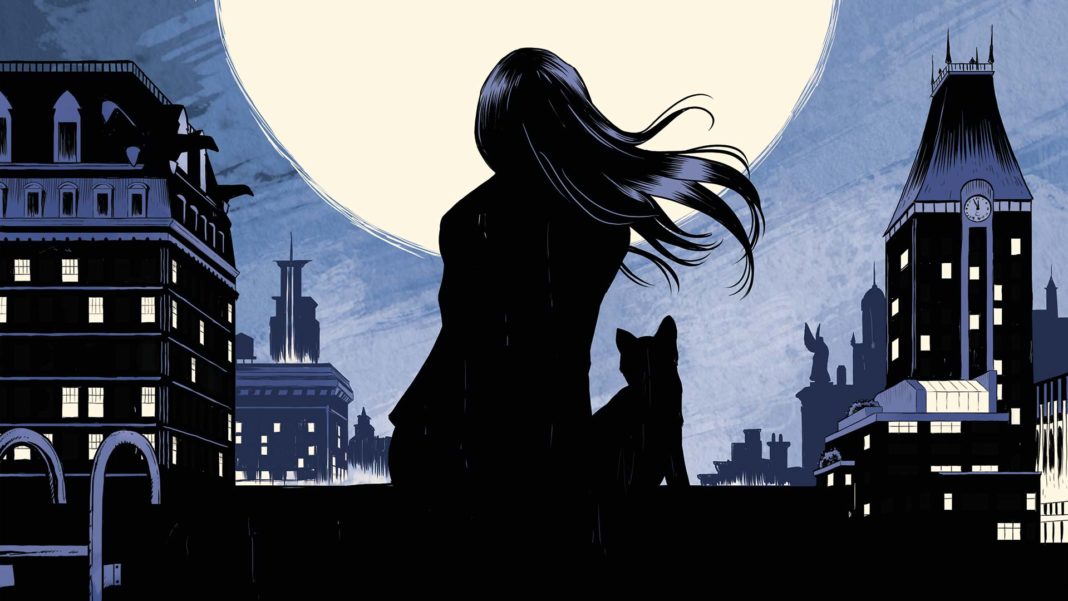
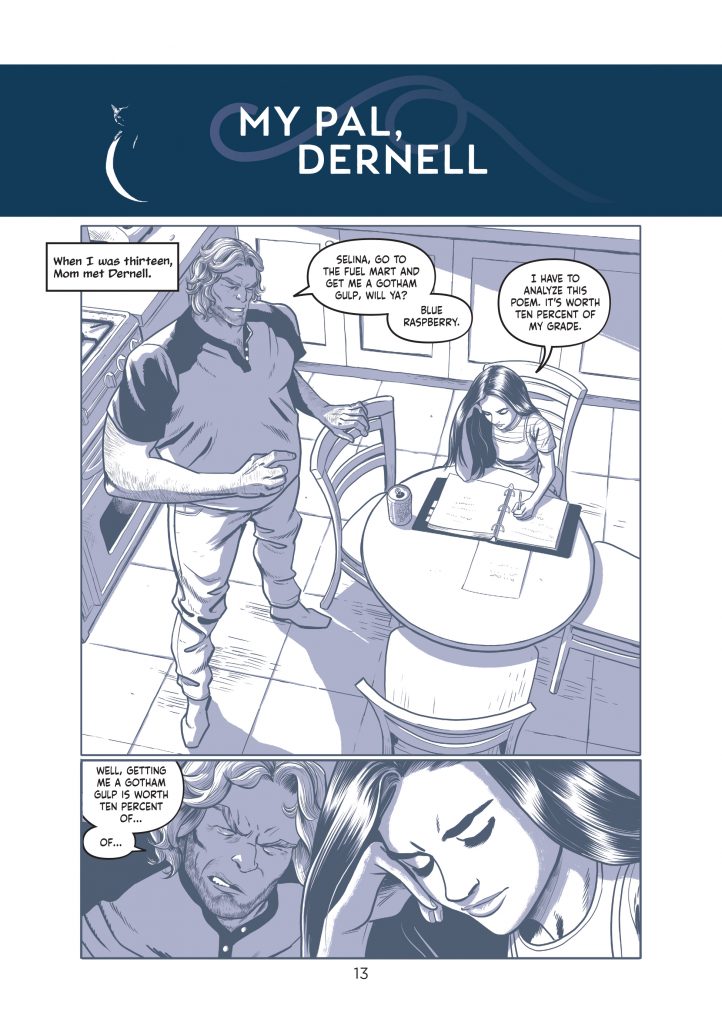
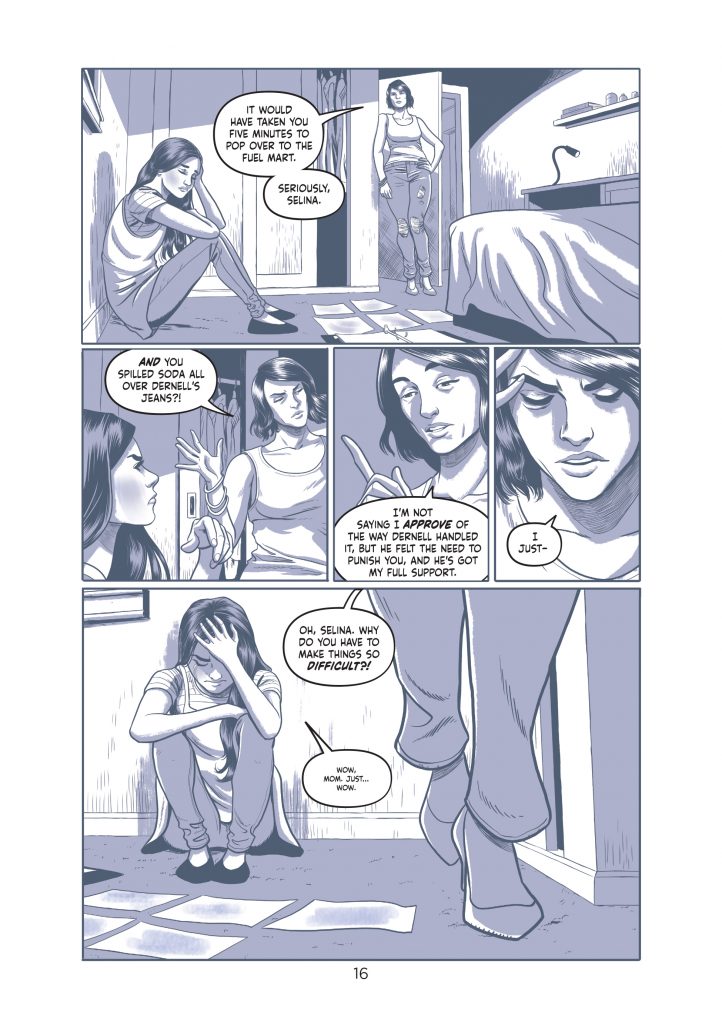
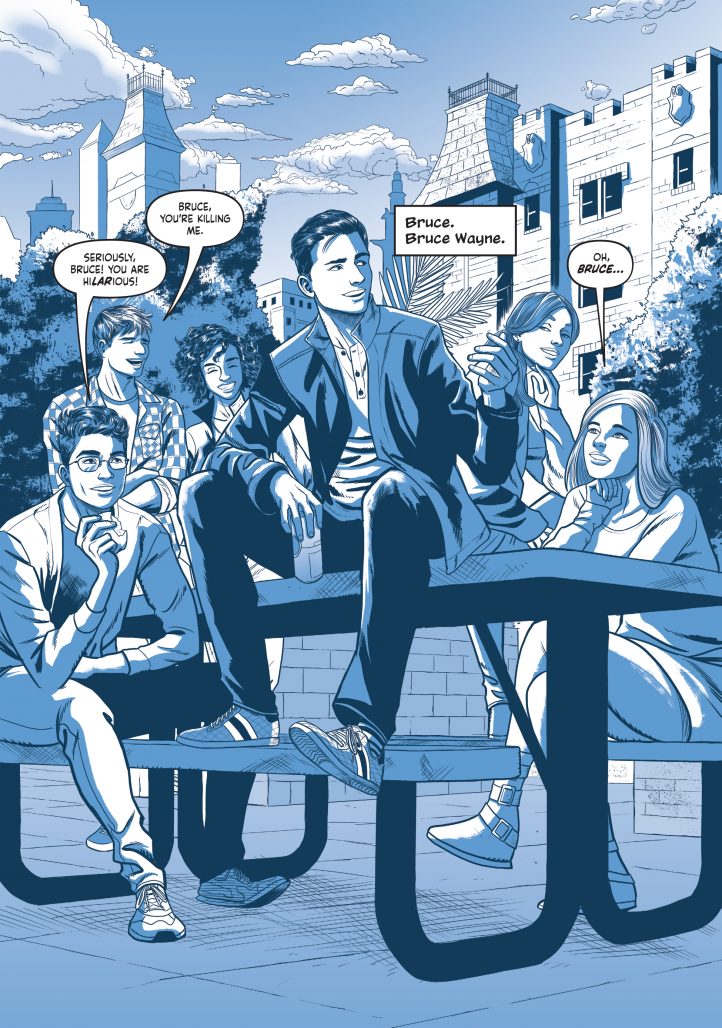
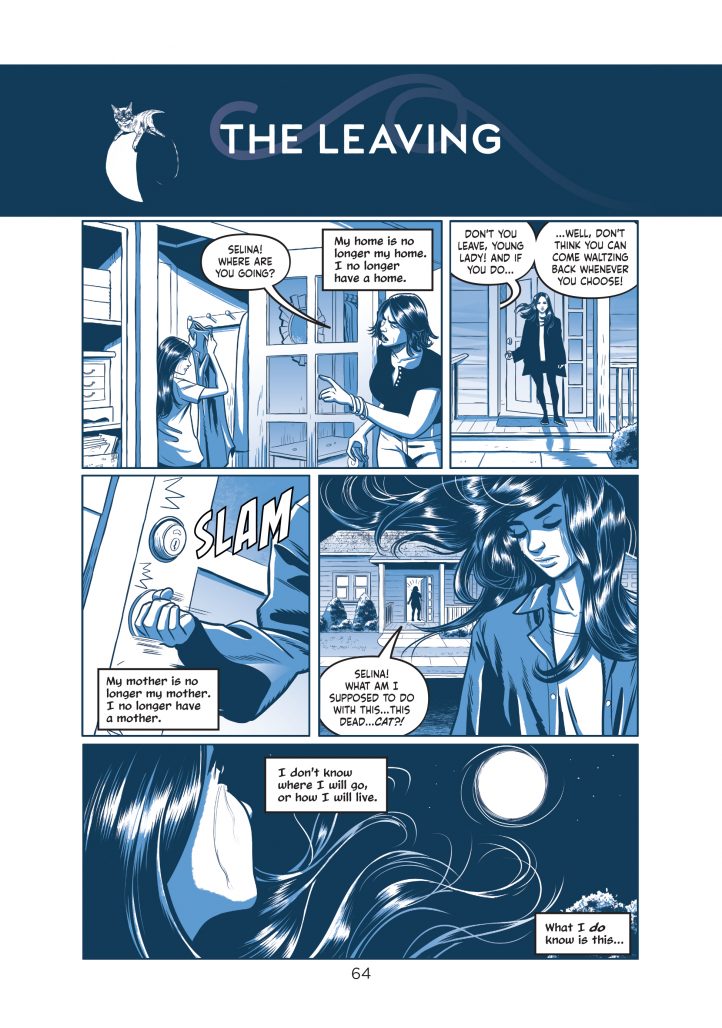
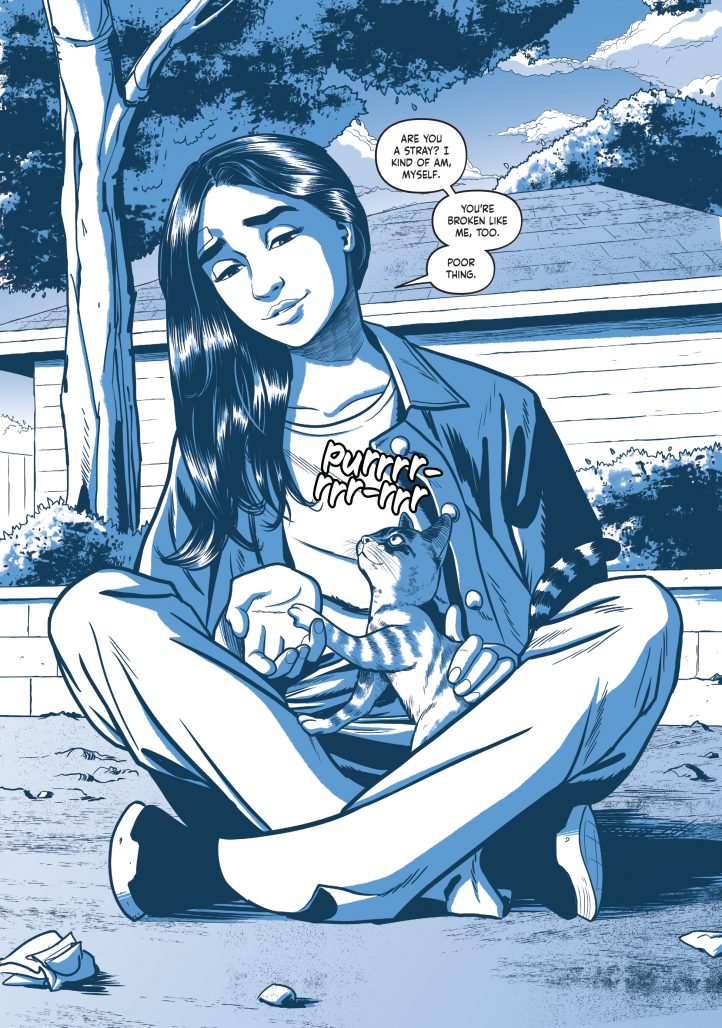
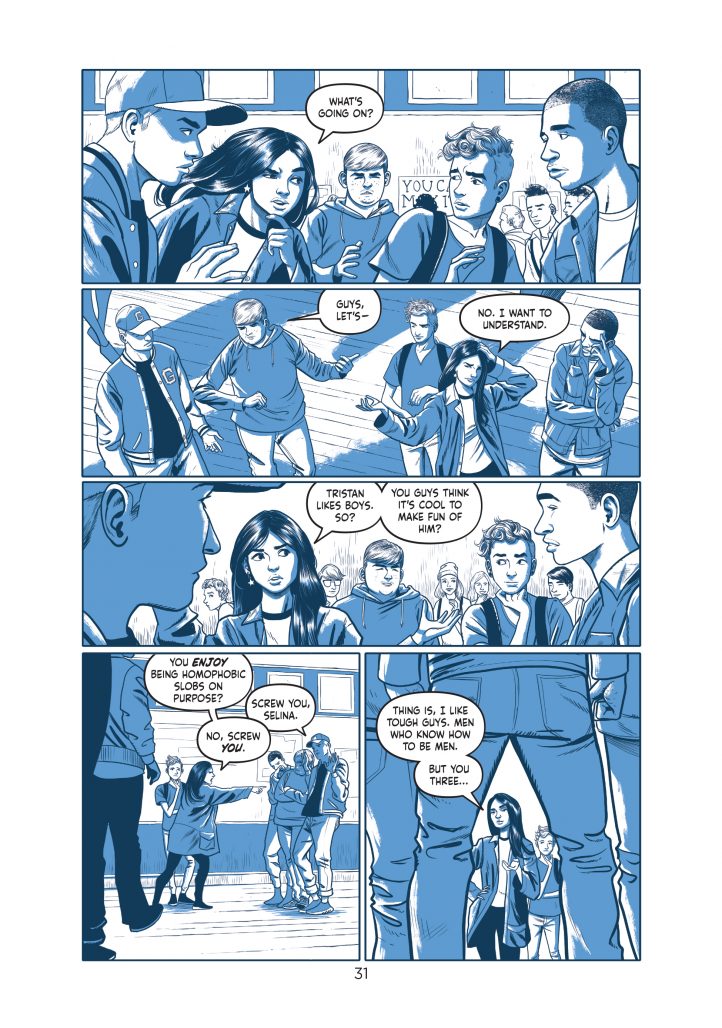

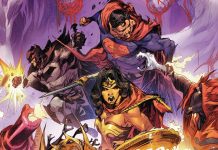




Comments are closed.